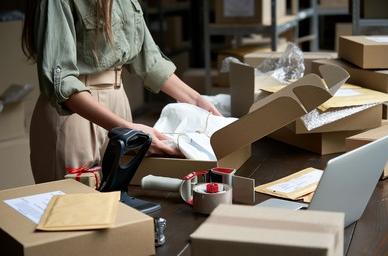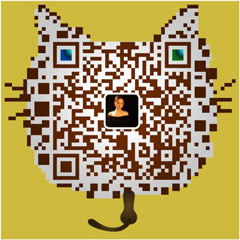10 Terms to Know in Wholesale Clothing
Nov 23,2021
Table of Contents
It is our recommendation to all of you who are interested in the wholesale clothing business and would like to learn more about the 10 terms to know in wholesale clothing to succeed in the wholesale clothing business. The importance of knowing what we do not know has never been greater than now. To learn something new, you no longer have to visit a library or enroll in a class. Basically, you have access to everything you need right in front of you.

1. Payment Terms

When you start a business, the first term of 10 terms to know in wholesale clothing is payment terms. You will be required to receive regular cash flow from your customers and wait for them to pay their bills on time. Having a clear understanding of the terms of payment will enable you to determine the payment period as a wholesale clothing owner.
The following are some payment terms wholesalers and suppliers use, which will help you understand the situation more quickly and thoroughly in case there are any issues.
Here are some of the types of payment items you may encounter, for example, Net-10 will require payment 10 days after delivery, while Net-30 requires payment 30 days after delivery.
PIA, Payment in advance, is simply a payment that is made ahead of schedule.
Additionally, there are a few standard ways for people to pay. Check the way funds are received before you start a business. Give details of how wholesale buyers are paying, such as a credit card, a check, PayPal or a bank deposit.
2. Leadtime
The leadtime is the duration of time between the start of a process and its completion. In wholesale clothing, the leadtime is the period between when a process is initiated and when it is completed. An order takes a certain number of days to be shipped from the moment it is placed, also known as turnaround time. In the case of the FondMart, once you place an order, we will start preparing your wholesale clothes right away. The leadtime will be the time it takes before the clothing is shipped.
It is essential to include any extra processing time and clarify nuances in your production process if you own clothing business.
3. Shipping Window
Shipping window is an important term to know in wholesale clothing. Generally, the shipping window is the period of time beginning before the ship date and ending after the ship date. This refers to the time frame between start ship and cancel dates when vendors are expected to ship.
It's typical to have a ship window of two weeks; therefore, an order placed on 2/1 would have a cancel date of 2/15. As a vendor, this means you can ship at any time during that period - you can ship right away on /1 or take the full two weeks and ship on 2/15.
4. SKU

SKU is a common term to know in wholesale clothing. Every product you sell needs a unique identifier called a stock keeping unit (SKU) to help you distinguish it from others. It's not enough to have one SKU for a t-shirt, for example. There should be different SKUs for every variant of a product. In the case of the t-shirt, you will need a unique SKU code for different colors and sizes.
Manufacturers use SKUs when they have a lot of inventory to keep track of. The SKU number is determined by the manufacturer, and SKUs should be as simple as possible
5. MOQ

MOQ stands for minimum order quantity in international trade. In other words, it is the lowest quantity of a particular product that a retailer needs to order. As part of the ordering requirements, retailers must order a specified number of each SKU as well as meet Order Minimums. There are different MOQ standards in each industry, so do your research so you know what they are.
It is also possible for the order quantity for each product to be recommended as a method of replenishment. Additionally, pay attention to the validity of the order, which is determined by the supplier. For instance, the minimum order quantity, the packaging quantity and the method of packing, and so on. Based on the above considerations, the purchaser's suggested order quantity will be determined.
6. MSRP
MSRP means Manufacturer’s Suggested Retail Price. Manufacturers recommend the manufacturer's suggested retail price as the price that retailers should set for the product they manufacture. The manufacturer's suggested retail price is contrary to the market theory of perfect competition since it prevents some stores from selling at a price higher or lower than the recommended price, and some stores will only sell at a price lower than the recommended price when they are on sale or clearance. As long as it doesn't cause consumers to rebound, a high price can be permitted in a perfectly competitive market.
However, the manufacturer’s suggested retail price is more common than perfect competition. The majority of the time, stores sell at the recommended selling price, which is usually determined by the unit price paid by the wholesaler. Generally, the larger the order quantity, the lower the unit price, and vice versa.
7. COGS
COGS is also a vital term to know in wholesale clothing. COGS means the cost of goods sold, which is the calculation of all the costs involved in selling a product. The cost of goods sold depends on the complexity of each product’s manufacturing process.
Generally, it appears in the purchase and sale profit and loss account. It should be noted that the cost of goods sold is the cost directly related to the manufacture of goods and the sale of goods, while other costs fall into the category of operating costs.
The cost of goods sold includes:
Component cost, raw material cost
Shipping costs, warehousing costs
Employee wages
8. Dropshipping

Dropshipping refers to a method of distribution in which customer orders are placed with a retailer, but the order is fulfilled and shipped directly from the supplier.
Direct shipping means that goods are sold by the seller without storing inventory, but rather by accepting orders from the customer directly. When supply chain management is in place, the ordering company sends the order, along with the shipping details, directly to the manufacturer, wholesaler, retailer, or execution company, which then ships the goods directly to the customer. The result is that retailers are responsible for marketing and sales, however, they do not have control over the quality, storage, inventory management, or transportation of products.
If this is the case, retailers won't keep the products in stock. The majority of the time, when working with online retailers, retailers will send orders to manufacturers, who will then ship them out to the customers, as is common practice. In this way, retailers can avoid taking on any financial risk or inventory, which is an advantage for them. Only if you understand the specific term can you take advantage of it.
9. Backorder

In short, a backorder is an order that has not been shipped by the manufacturer due to an insufficient amount of inventory.
You have this problem when your business is doing well and your sales are so good that you cannot keep up with the demand. Do you know what you can do in such a situation? It is obvious that you cannot stop selling - that would mean that your customers would go to your competitors. This is where backorders come into play!
The term "backorder" is used to describe any order that has been placed by a client of a stock company but that has not yet been received into the stock company's inventory. As soon as you allow backorders, you will be allowing your customers to buy your products even if you do not have enough in stock - thereby creating backordered products.
10. Buyback

It is called a buyback when a retailer negotiates with a wholesaler in order to repurchase unsold inventory. In some cases, people may be able to benefit by buying from specific wholesalers. Whenever a new customer is not entirely sure of your brand, price, product, etc. However, if they still want to try it, they can demand a refund or ask for sales assurance. The goal is to give the customer confidence that if the product cannot be sold, they will be able to return it. The key is to make sure your return plan is in place. There is also the possibility of setting up a repurchase program or a guaranteed program to a maximum of 100 units. Accordingly, if they are interested in buying 300 pieces, then that would be wonderful, but if it doesn't work, you are only willing to accept 100 pieces.
Having a good understanding of 10 terms to know in wholesale clothing will enable you to be more professional in the wholesale clothing business. Become a member of FondMart today and start your business for free! We are pleased to offer one-on-one assistance from our private service managers.
Subscribe for latest update
We will keep you updated with FondMart's style news.
Popular Blogs






